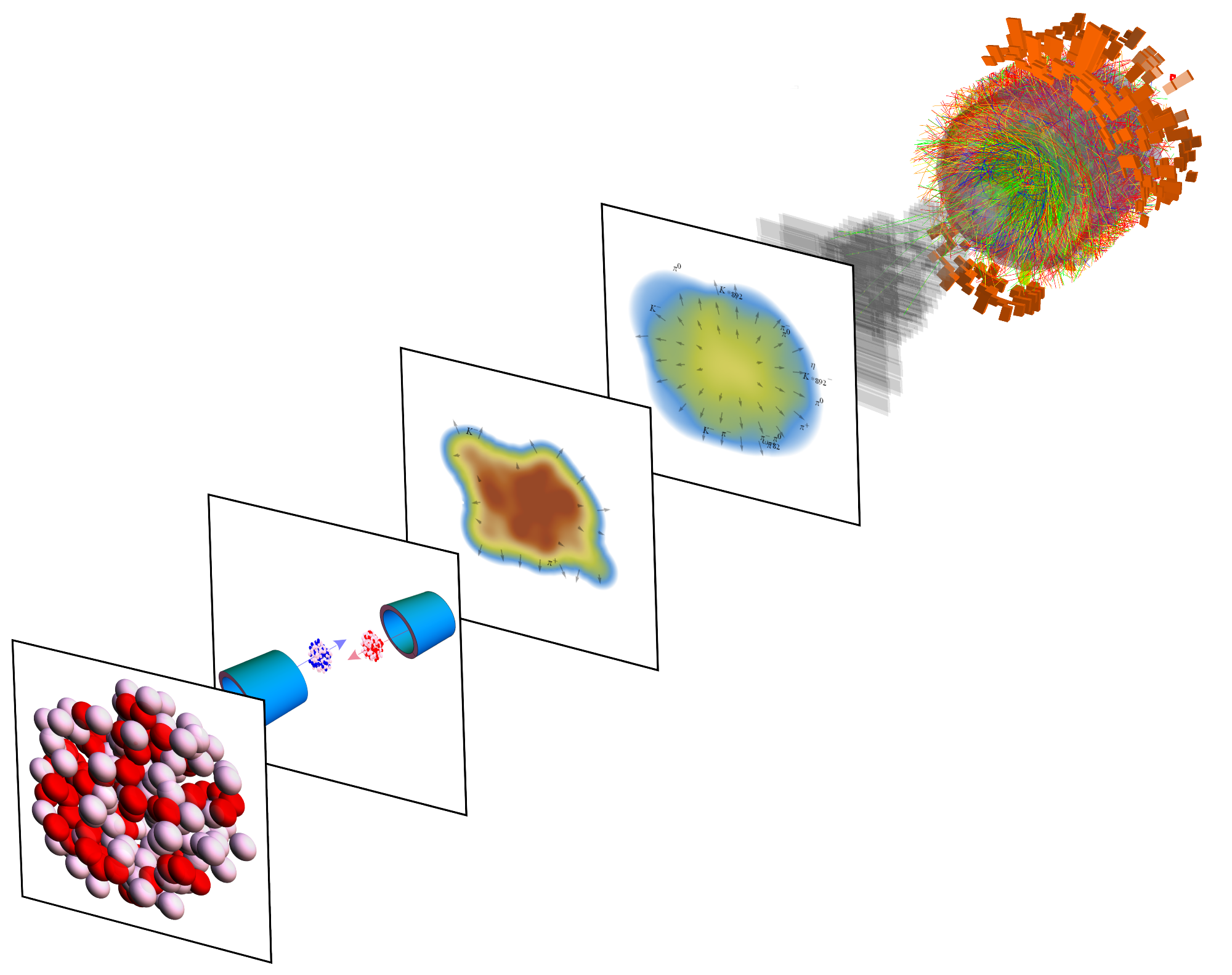The nucleus of lead-208 is fascinating. With 126 neutrons and 82 protons, it is neutron-rich. Its structure is one of its more intriguing features; protons and neutrons coexist at its center, while a diffuse shell made primarily of neutrons surrounds the periphery. It is known as the neutron “skin” by scientists. Understanding the behavior of quarks and gluons—strong force exchange particles—in the nucleus can be improved by researching the neutron skin.

When lead nuclei (left) are collided, the neutron distribution affects the shape of the quark–gluon plasma matter produced (middle), leaving measurable imprints in the distributions of detected particles (right). Image Credit: CERN
This can also be used in astrophysics to learn more about the structure of neutron stars, which are stars with a core as dense as that of the Sun that remain after a star has had a supernova explosion.
The thickness of the lead-208 neutron skin has been measured by theoretical physicists at CERN using data from heavy-ion runs of the Large Hadron Collider. The measurement comes out to be 0.217±0.058 femtometers.
This agrees with earlier measurements made by other groups utilizing various techniques. Overall, 670 data points from Runs 1 and 2 of the LHC were used by the scientists, most of which came from the ALICE experiment and a small amount from ATLAS and CMS.
It is not an easy task to measure the thickness of this neutron skin. Electron scattering can be used to determine the structure of protons in the nucleus, but since neutrons are chargeless, they do not scatter electrons in the same way. Nonetheless, the strong nuclear force, which holds quarks and gluons together in atomic nuclei, has a significant impact on neutrons.
High-energy collisions between lead-208 beams shot in opposing directions occur during the heavy-ion run at the Large Hadron Collider. These nuclei are “squashed” into a flat pancake traveling at nearly the speed of light because they are Lorentz-contracted by factors of up to 2500.
Quark-gluon plasma is created when the gluons keeping the quarks inside the nucleons together are torn apart at the moment of collision due to the tremendous energy and pressure in the colliding nuclei. Quark-gluon plasma is hypothesized to be at the center of neutron stars and to have been the composition of the universe shortly after the Big Bang.
This plasma decays into particles in the LHC as temperature and pressure drop, and LHC detectors can monitor these particles to reveal the quark-gluon plasma’s characteristics. The size and form of the quark-gluon plasma in lead-208 are determined by the distribution of protons and neutrons. This enables scientists to compute the thickness of the lead-208 nucleus’ neutron skin by enabling them to “see” the nucleus’ structure.
This is the first time that a strong force has been used to measure the thickness of the lead-208 neutron skin. A similar finding of 0.283±0.071 fm was produced in 2021 by the Lead Radius Experiment (PREX) group at the Thomas Jefferson National Accelerator Facility in Virginia. On the other hand, methods based on the electroweak force rather than the strong force were used to determine this.
What is exciting about this new determination is that it is done using only existing data and yet gives a competitive uncertainty when compared to other experimental determinations. In the future, more dedicated measurements can definitely improve the precision of the extraction from LHC data.
Wilke van der Schee, Study Author and Research Fellow, CERN
Giuliano Giacalone, one of the study’s authors from Heidelberg University, added, “The result connects the research of physicists from seemingly distant areas in an unprecedented way, It brings together the topics of high-energy nuclear collisions, neutron stars and nuclear structure.”
Journal Reference
Giacalone, G., et al. (2023) Determination of the Neutron Skin of 208Pb from Ultrarelativistic Nuclear Collisions. Physics Review Letters. doi:10.1103/PhysRevLett.131.202302.